8 Wishes
Paul Sanchez rode his bike around the US to benefit kids with LD. See how you can help. |
“I’m Not Lazy.I’m Not Stupid.I’m Dyslexic!”
The author of those words did not come to this conclusion until adulthood. Henry Winkler, who some of you remember as the Fonz from “Happy Days,” realized he had dyslexia in 1976 after narrating the film “Everybody Has a Song” about kids with learning disabilities. He says he felt as though he was reaching without grasping as he went through school. Today, he has grasped many of his goals. Not only is he a producer and actor, but he is also a co-author with Lyn Oliver of the well-loved Hank Zipzer series about a mischievous boy with dyslexia.
(Today Show Video)
(Winkler’s 1988 speech)
(Excerpt from one of his books)
Find his books in Learning Disabilities Literature. |
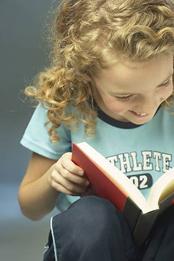
|
Kids and teens with LD will find useful information here. They can find e-pals and even connect with college students with LD who serve as mentors. |
|
You will find valuable links to websites and articles addressing the needs of students who have giftedness and learning disabilities. |
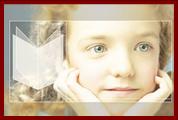
|
A new way to identify students with learning disabilities is being explored. Tier 1 is the instruction all students receive in general education. Students who are unsuccessful at Tier 1 are placed into Tier 2 for concentrated and temporary small group instruction. Students who are unsuccessful at Tier 2 are evaluated for learning disabilities. Click to read more about RTI at NRCLD, Schwab, OSEP, NJCLD, and LDA. |

|
Have you seen pictures of brain neurons? If it’s been a while, click here. |
|
LDA is an organization that was founded by parents but has grown to include professionals and adults with LD. The site includes a comprehensive network of resources. Check to see if a chapter of LDA is available close to you. |
|
The purpose of this site is to serve as a “parents’ guide to helping kids with learning difficulties.” Along with articles, you will find stories from parents and a message board. |
|
Rick Lavoie is a popular speaker in the field of learning disabilities and is the author of several informative books. You can sign up for a free subscription to his podcast on this website. Rick’s DVD’s are available from PBS. |

|
Many researchers are beginning to distinguish between verbal learning disabilities and nonverbal learning disabilities. Students with nonverbal learning disabilities may have no difficulties with reading or may have hyperlexia, meaning they can sight read well but have poor comprehension. This website provides resources. |
|
The association provides support information, an annual symposium, an online forum, and research articles. |

|
Learn about cutting-edge research at the NRCLD. Also, be sure to check out the history of LD article to discover how the field has changed. |
|
Link to the No Child Left Behind website. You can view information from NCLD that explains how students with LD are affected by NCLB by clicking here. |
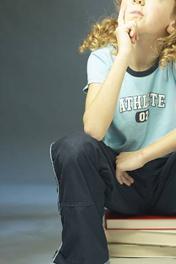
|
The purpose of the council is to promote effective teaching and research in the field of learning disabilities. |
|
Dedicated to the memory of Ennis Cosby, who had learning disabilities, this website provides resources to parents, teachers, and students. Read some inspiring thoughts from Ennis Cosby and other people with learning disabilities. |
|
Read blogs that provide useful resources regarding learning disabilities. Add your comments. |
|
This outstanding school for students with learning disabilities emphasizes experiential learning. Founded by Sally Smith, the school’s Academic Clubs engage students in learning core curriculum through the arts. |
|
Sponsored by the Division for Learning Disabilities of the Council for Exceptional Children, this website provides news, resources, and discussions to enhance the teaching of students with LD. |
|
The oldest organization devoted to learning disabilities, IDA follows the tradition of Dr. Samuel Orton, a pioneer in the field. The organization strongly promotes the Orton-Gillingham Method, which emphasizes a multisensory approach to teaching reading. Be sure to check out their article on the social and emotional aspects of dyslexia. |
|
AHEAD works to ensure that students with disabilities, including learning disabilities, have full access to higher education. |
|
This website was created by and is for people with learning disabilities. Goals include educating the public and developing tools for people with LD. |
|
If you have a child who is highly gifted and has learning disabilities, this site addresses the needs of your family. |

“No, No!I Don’t Want to Go!”
Hear kids at the Lab School in Washington, DC talk about what it feels like to go to school when you can’t read. Then see the kids make a short claymation film about a teacher who’s “all wet.” |
The ABC’s of You |
Learning Disabilities Resources |


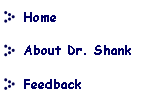
|
Learning Disabilities |

Finding Order in Spaghetti
My father’s boss once told me that Dad could find order in a bowl of spaghetti. That’s the kind of skill required for researchers to decode the mystery of learning disabilities. First they must find order in the brain—how the spaghetti-like neural pathways function; then, they have to find disorders in those pathways that could cause learning disabilities. Obviously, doing so has proven challenging. Researchers have only had access to brain imaging since the early 1960’s. Although imaging has improved considerably since then, we still search for answers. For those of you who don’t know, a student is identified with a learning disability when they have the intelligence for reading, writing, and math, but they can’t master one or more of these skills at the expected level, despite receiving typical instruction in school. I’m often clued in that a student might have an unidentified learning disability when I hear a teacher comment, “She’s just not trying.” That comment suggests the teacher recognizes the student’s intelligence but is perplexed as to why the student isn’t performing as expected. Unfortunately, the victim is often blamed for being lazy or obstinate. When LD became recognized as a field in the late 1960’s, early definitions emphasized a neurological component. We had to take that aspect of the definition by faith, although it was a logical assumption based on the characteristics of these students. We made numerous mistakes over the years in our attempts as a field to “cure” learning disabilities. I remember when we emphasized perceptual motor training back in the 70’s. A grandmother volunteered to work with my students on turning somersaults and walking a balance beam to improve their reading. (Yes, she turned somersaults with them.) By the way, I’m sorry, former students, if any of you stumble onto this page. I wish I had known more then about how to help. Well, at least you probably found it entertaining.) The good news is that we have more answers than we did in those early days. Thanks to research in the 1990’s, by Dr. Sally Shawitz and her multidisciplinary team at Yale University, we now know through brain imaging that students with dyslexia often have difficulty with phonological awareness—being able to hear isolated sounds in words. That’s why if you ask a child with a reading disability how many sounds they hear in cat, they frequently reply “one” instead of “three.” We educators were spending scads of time teaching kids to identify the sounds letters make, but if they didn’t understand that words were made up of these individual sounds, we were only adding to their confusion. The wonderful news is that the brain can be rewired for phonological awareness. Many current reading programs apply Sally Shawitz’s work. Thanks to some of these programs, adults with dyslexia are now learning to read for the first time. Students who receive this instruction often develop reading skills that would be expected for their intelligence. Questions about LD remain unanswered. Dyslexia is only one type of learning disability and, in some cases, may have causes other than deficits in phonological awareness. Other types of LD also need further research, including nonverbal learning disabilities. Along with looking for causes and treatments, the field continues to explore new ways of identifying students who need support programs. We’re not finished sorting through that bowl of spaghetti yet! — Marilyn |
|
The NCLD addresses preschool, school-age, and adult issues. The organization provides online chats with experts and a policy and advocacy center. |
|
What adaptations and accommodations might someone with LD need to be successful in the classroom, at work, and in everyday life? This guide from the Virginia Adult Learning Resource Center provides recommendations. |
|
LD Online is an excellent resource for parents and teachers. Find articles or search the store, They even have a section of their website that’s devoted to kids. |
|
If you are new to the field of learning disabilities, this website provides the basics with clear explanations and case studies. |
|
Dr. Christina Fiedorowicz provides an overview of brain research in the last decade. You can search other articles and information from the Learning Disabilities Association of Canada at this site. |

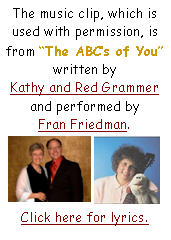
|
This outstanding school for students with learning disabilities emphasizes experiential learning. Founded by Sally Smith, the school’s Academic Clubs engage students in learning core curriculum through the arts. |
|
“You have greatness within you . . . It’s your job to figure out what your gift is—to dig down deep within yourself, get it, and give it to the world.” Henry Winkler’s advice to kids with dyslexia |
From Adolescent to AdultSharon Townsend wrote this online parent handbook titled Transition and Your Adolescent with Learning Disabilities: Moving from High School to Postsecondary Education, Training, and Employment. She dedicated the book to her son, who “has learned, as has his mother, that dreams can and do come true—they just have to be accommodated.”
|
Technology Resources
Freedom Scientific has created WYNN, a software screen-reading program designed specifically for people with reading disabilities. Their Test Talker program reads tests to students. Learn more and receive a free demo at their website.
Do you have a writing disability? Nuance has developed Dragon Naturally Speaking, to “turn talk into type.” See a demo at the website. Learn more in this video called Working Together: Computers and People with Learning Disabilities developed at the University of Washington. |
Heterogeneity
One of the challenges in the learning disabilities field is that characteristics vary widely from one student to the next. One student has a reading disability, the next has a math disability. One is highly gifted, the next has average intelligence. Recognizing various subtypes of learning disabilities is essential to addressing the needs of these students. Helpguide.org provides an easy-to-follow table that describes nine subtypes of learning disabilities. The website also provides a good overview of other issues associated with learning disabilities. |
Video for Kids
The Learning Disabilities Association of Ontario produced this short video to help kids understand learning disabilities.
LD or BD?The emotional aspects of learning disabilities are the topics of these videos. Anxiety over failure and teasing or bullying by other kids can make these students feel trapped. |
Academic and Social Resources Literature and Film Resources |
Other Resources |
Topic Menu
Positive Behavior Support
Attention Deficit/ Hyperactivity Disorder
The Therapeutic Role of Animals
Single Parents of a Child with a Disability
Writing for Children and Teens
West Virginia |
Celebrity QuizTake a quiz on famous people with learning disabilities at LD Online. |

“The ABC’s of You” |
|
Teaching LD |